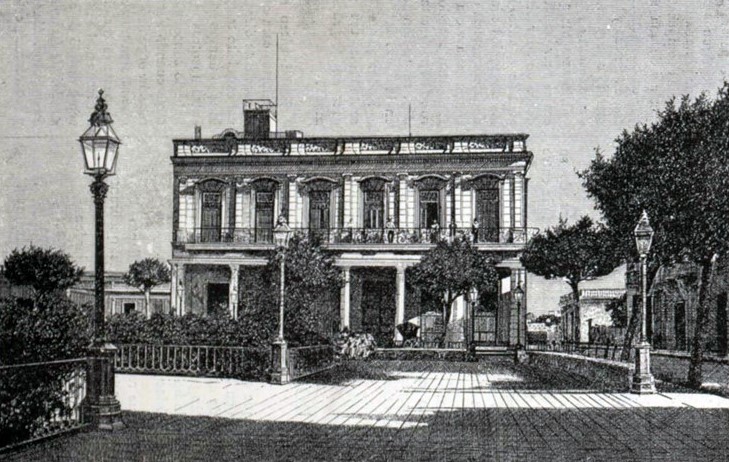A brief note, published on Sunday, May 12, 1889 by the Diario de la Marina, announced the important news: “Mr. Waterman, engineer of the Tonson Houston International Company, from Boston, has arrived in Cárdenas for the establishment of electric lighting in said city.”
I say important because the city known as “the city of firsts,” called “The Barcelona of Cuba” by the Catalan Eduardo Asquerino, director of the Spanish newspaper La América, in 1866, was going to become the first town in Cuba to enjoy electric lighting.
The U.S. specialist arrived in a rainy month, with heavy downpours, after a period of intense drought. On May 14, he got to work, in coordination with José Menéndez Ordóñez, in charge of the construction of the building. The technical part of the project was up to Waterman.
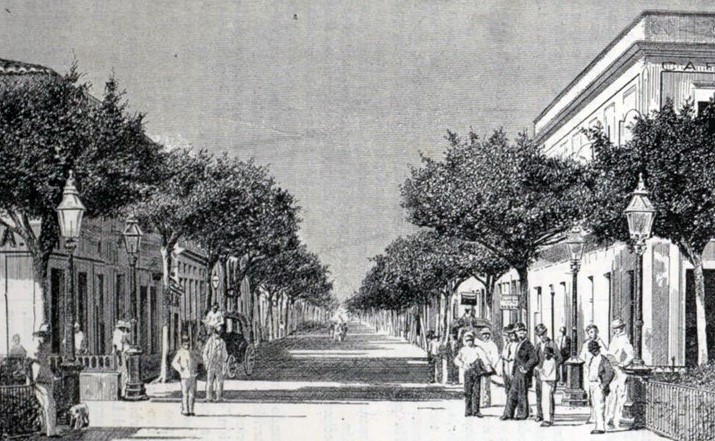
A business community initiative
Gumersindo Lanza, an enterprising man, conceived this project, supported by other merchants, according to Matanzas contemporánea. Guía provincial, in 1887. The work began immediately, especially the feasibility study. To learn how the new lighting system worked, a commission traveled to the United States. In a letter addressed to Mayor Francisco Comas Fuster, on January 24, 1889, they said:
“The undersigned, residents and merchants of this city, with their corresponding personal identification cards, state: That they have carefully studied various electric lighting systems, and the data, budgets and (sic) reports that they have collected, it appears that no other, in their opinion, presents more improvements and provides more economy in its production than the Thompson and Hoston system, from Boston, USA. And this is proven by the number of prizes that said system has obtained in the main competitions on electricity that have been held in Europe and America. The undersigned wish to contribute so that the city of Cárdenas has advances that lead to great progress in all important towns and are useful to the population, the City Council that you preside over takes this into consideration, we will form a Company that will be called the Cárdenas Electricity Company.”
Since the old gas lighting system, established in Cárdenas in 1857, caused continuous complaints from the population due to its high prices and instability, the official and the other members of the municipal government did not hesitate to support the initiative.
On March 14, 1889, the Compañía de Electricidad de Cárdenas S.A. was established with a capital of 75,000 pesos and the company Thomson and Houston, from Boston, was contracted to carry out the work.
This company offered a portfolio of four public lighting systems, provided electric motors from half to 30 horsepower (22 Kw) and had installed electric railways on 19 tracks in the United States in 1888.
The company won fair and square against the Western Electric Co., which was competing for the Cuban market and in 1889 boasted of having installed lighting in the San Vicente, Senado, Dos Hermanos sugar mills, the Remeneu match factory, the Terry Theater and the sugar and honey refinery of Salvador Vidal in Cárdenas.
At that time, the installation of the electric lighting system in Havana theaters and parks and in some commercial establishments was a novelty. Ships were also beginning to use the new technology for their lighting.
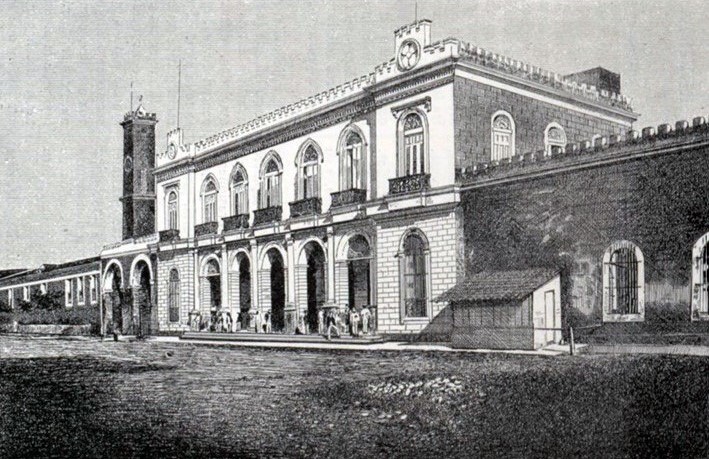
Inauguration
The delegation headed by General Manuel de Salamanca Negrete, Governor of Cuba since March 13 of that year, arrived at the overseas town of Regla on Saturday, September 7, 1889. The large group, made up of military personnel, public officials and representatives of the press, boarded an extraordinary train that left at seven fifteen to Cárdenas.
At eleven twenty they arrived in the city, where they were received by the highest civil and military personalities of the town, and the businessman Gumersindo Lanza, who, together with the mayor, had invited the governor to the inauguration of the electric lighting of the city.
Testifonte Gallego García, a lawyer, former journalist of the Court in Madrid, who at that time served as the Governor’s private secretary, was impressed by the beauty of the town. He would later write in his book Cuba por fuera, apuntes al natural:
Cárdenas, a very important city, is without a doubt the most artistic and grand town on the island. It is immense because of the population it has; its wide streets, carefully maintained, and its beautiful and well-proportioned buildings, are proof of the existence of great elements.
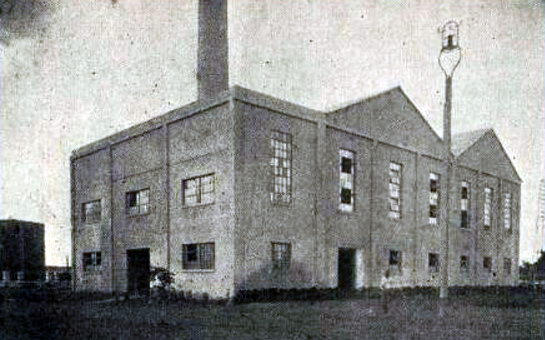
How were the streets decorated for the celebration?
A report by the Diario de la Marina correspondent informed:
The town is brightly and colorfully decorated, and the streets have a very lively appearance. Several arches have been erected in honor of the illustrious guest, some of them very pretty. The main ones are on Calle Real, one of the widest and best laid out streets of all the towns on this island. The arches on Calle Real have been erected: one, for Commerce; another, for the Army, Navy and Volunteers, and another, for the Casino and Club societies. On Coronel Verdugo Street there is one erected by the City Council, as well as others in various parts of the city…
A broad program was organized for the celebration that included a baseball game, an open-air concert, dinner in the Casino halls and dancing at the Club. After a short break, at the City Hall headquarters, General Salamanca witnessed the parade of the troops, later he enjoyed a banquet with his traveling companions and visited the Infantry Headquarters, the Jail, the Hospital and other buildings.
And night came, and with it the long-awaited foundational act. A. Caro, journalist from the Diario de la Marina, who was present at the historic event, recounted what happened:
At the appointed time of night to witness the supply of current to the entire city, both to public buildings and private homes, we went with Mr. Lanza to the plant or building from which the subtle current was to come out, which in that city, the first on this island to be illuminated by it, was stirring the most lively interest and curiosity as has been proven with all the applications of this powerful agent in the sovereign laboratory of nature, where lightning is forged and thunder is produced, as we have stated more than once.
As soon as the devices were started up, given the appropriate signal, and as if a lightning bolt had condensed, the plant or building of the Company, all areas of the city, the City Hall, the Club, public establishments and private buildings, were seen brilliantly illuminated.
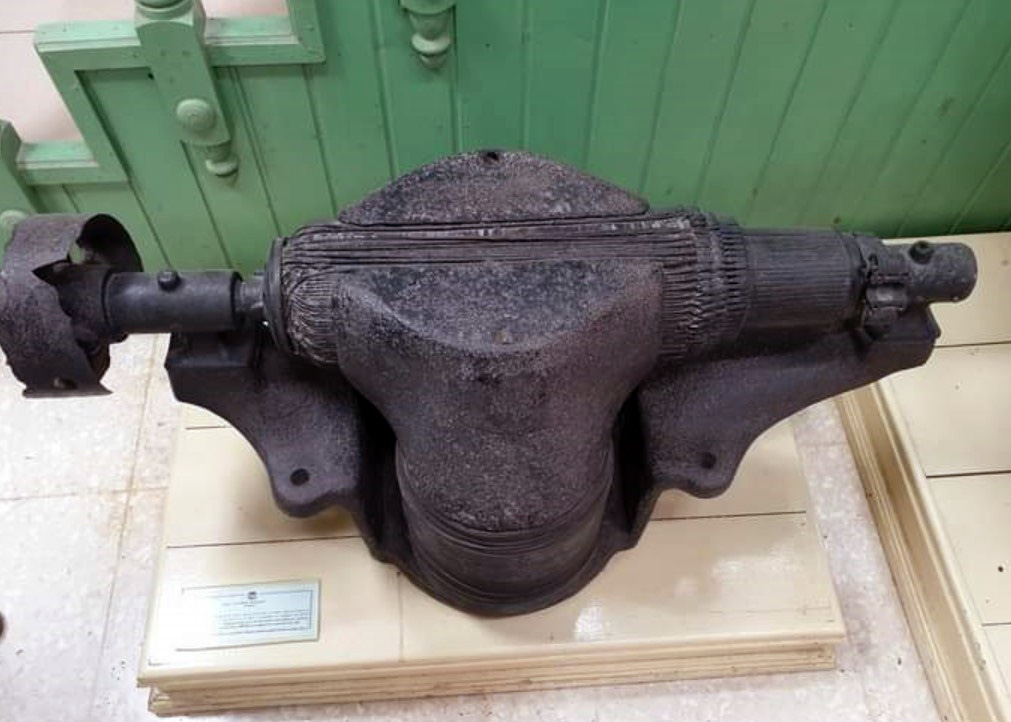
The plant, blessed by General Salamanca and the mayor’s wife, had the capacity to supply arc light to 320 1,200-candlepower lamps using two dynamos, and incandescent light to a thousand 16-candlepower lamps, also using two other dynamos. Eighty-four arc lights were set up, at a distance of 200 meters, and on the cross streets, at 133 meters.
According to chronicles of the time, electric arc light emitted an intense light and gave off a lot of heat, but it was, at that time, the most advanced for public lighting since the U.S. inventor and businessman Thomas Edison, in 1879, patented his design of the carbon filament light bulb.
While they were dancing at the Cárdenas club that night, Gumersindo Lanza was enjoying his moment of glory, as he was treated like a popular hero. He had made a good deal; in the offices of the Company, which he managed, he had numerous requests from private homes and commercial establishments to contract the electricity service. The City Council would pay 19,000 pesos annually divided into quarterly installments, to the company. Private individuals would be charged 2 pesos for each light bulb, although later the price was lowered to 1.40 Spanish gold.
From afar, a chronicler of the Diario de la Marina wrote, “the halls of the Club looked like a golden ember, with a clarity that resembled day.”
________________________________________
Sources:
Testifonte Gallego García: Cuba por fuera, apuntes al natural, La Propaganda Literaria, Havana, 1892.
Matanzas contemporánea. Guía provincial, 1942, Editorial Panamericana S.A.
Diario de la Marina
Ecured

